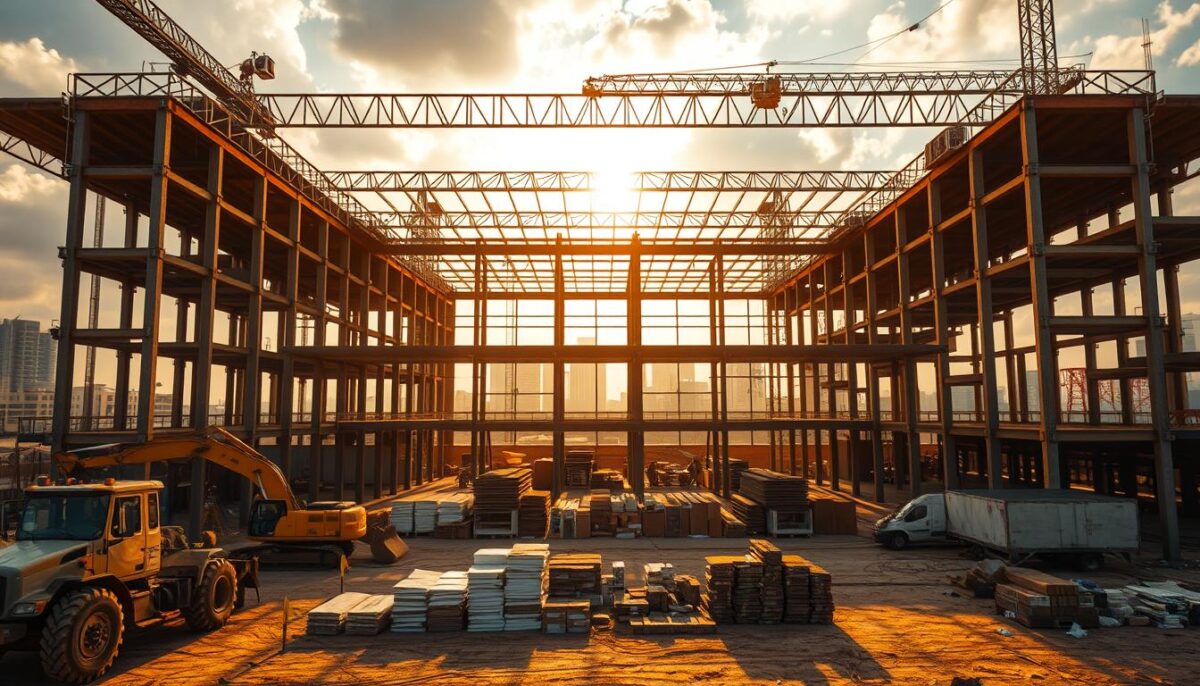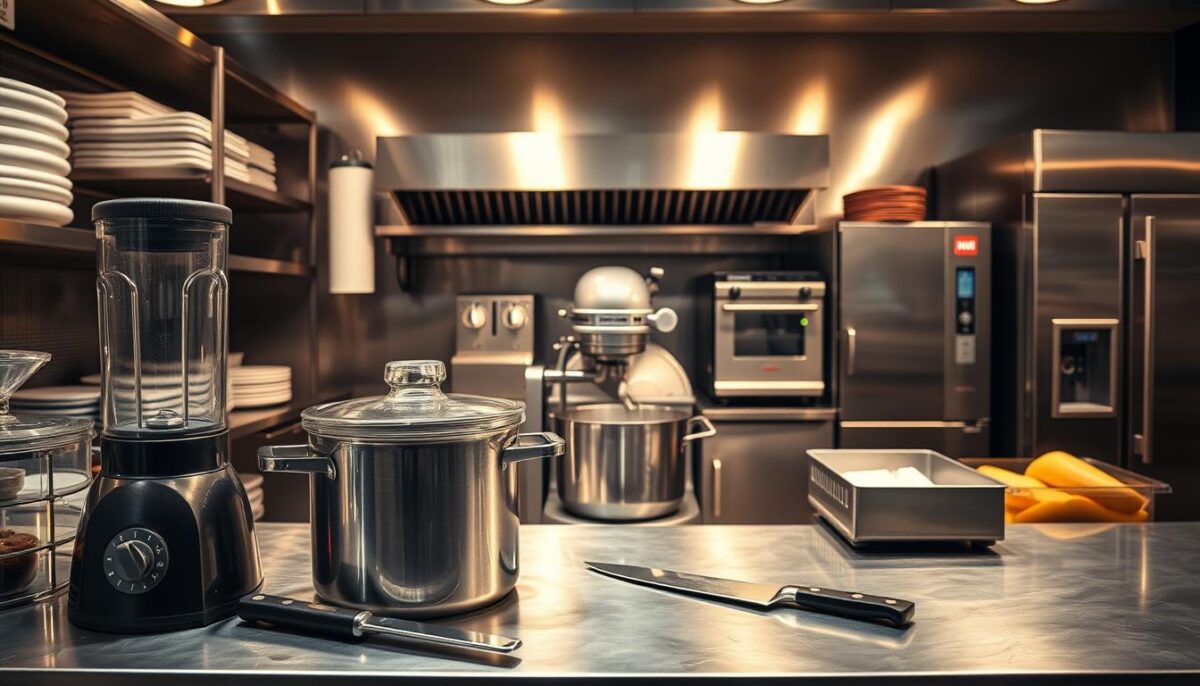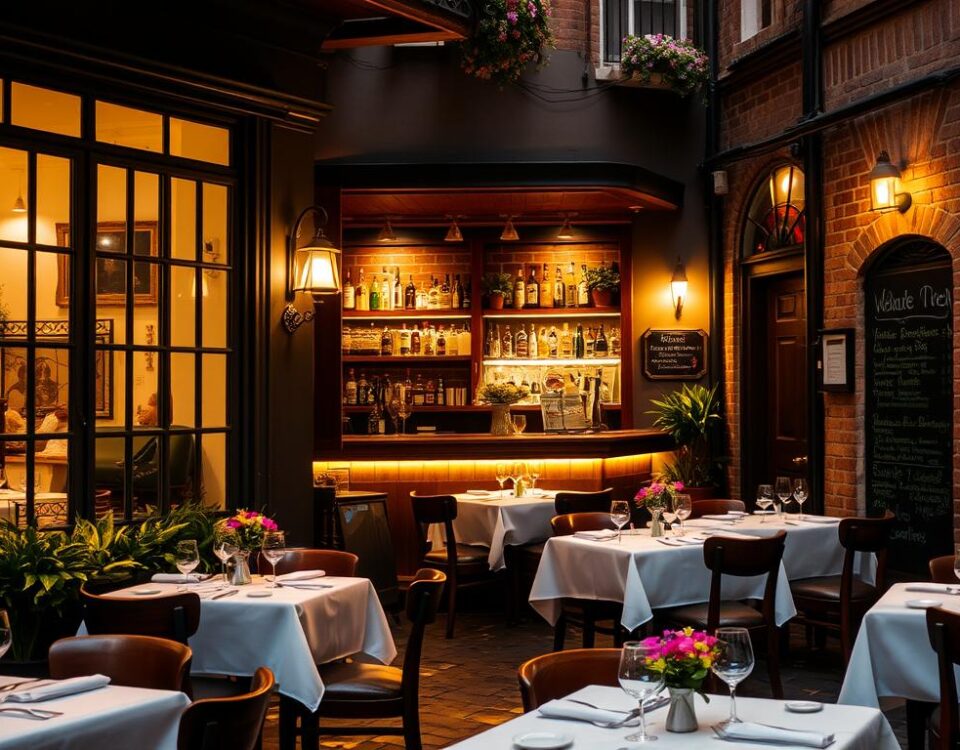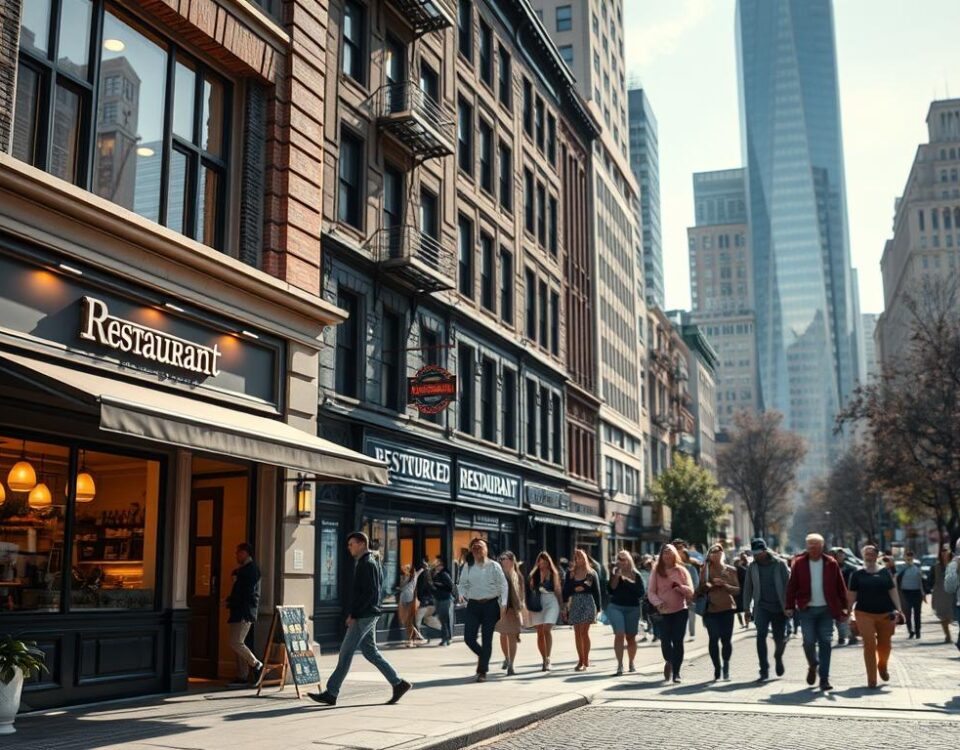
The real price of starting a restaurant from scratch
October 29, 2025
Why Customers Trust Certain Restaurants Instantly and How to Build Credibility
October 30, 2025When I opened my first restaurant, I thought I had accounted for every possible cost. But, I quickly learned that there were several hidden expenses that threw my budget into disarray.
Did you know that about 60% of restaurants fail within the first year? One major reason is inadequate financial planning for unexpected costs. As I navigated the challenges of launching my eatery, I encountered several surprising expenses that weren’t in my initial business plan.
As I reflect on my journey, I realize that being aware of these potential hidden costs could have helped me prepare better. In this article, I’ll share the six major costs I faced and the strategies I developed to manage them effectively.
Key Takeaways
- Understand the common expenses associated with opening a restaurant
- Learn how to create a more realistic budget with contingency funds
- Discover strategies for managing unexpected costs
- Improve your planning to reduce financial stress
- Gain insights into the costs that can impact your bottom line
The Reality of Restaurant Opening Expenses
When I decided to open my restaurant, I was surprised by the numerous costs that weren’t immediately apparent. Despite my careful planning, I quickly discovered that restaurant opening involves numerous hidden costs that weren’t apparent during the initial budgeting process.
Why Even Careful Planning Can Miss Hidden Costs
Restaurant owners often focus on the big-ticket items but overlook smaller recurring expenses that can significantly impact the bottom line over time. I learned that industry standards suggest budgeting an additional 15-30% beyond your initial estimates to account for these unexpected costs. The reality is that running a restaurant involves complex financial considerations that extend far beyond the obvious expenses of food and labor.
| Expense Category | Initial Estimate | Actual Cost |
|---|---|---|
| Lease Payments | $3,000 | $3,200 |
| Kitchen Equipment | $20,000 | $22,500 |
| Initial Inventory | $5,000 | $6,000 |
How These Unexpected Expenses Impact Your Bottom Line
These hidden costs don’t just affect your opening budget—they can continue to impact your profitability in the long run if not properly managed. I’ll explain how these unexpected expenses created cash flow challenges during my critical first months of operation when customer traffic was still building. Understanding the full financial picture is essential for restaurant success, as undercapitalization is one of the leading causes of restaurant failures.
Key Takeaway: Restaurant owners must be prepared for unexpected expenses to avoid financial strain. By budgeting extra for hidden costs, you can ensure a smoother opening process and maintain profitability in the long run.
1. Surprise Construction and Renovation Costs
One of the most significant challenges I faced when opening my restaurant was dealing with unexpected construction and renovation costs. These expenses can quickly add up and strain your budget if not properly anticipated.

When I leased my restaurant space, I budgeted for basic renovations, but I was blindsided by building inspection issues that weren’t visible during my initial walkthrough. Simple cosmetic updates turned into major structural work when we discovered electrical systems that weren’t up to code and plumbing that needed complete replacement.
Building Inspection Issues I Didn’t Anticipate
Shoddy workmanship that may have been in place long before I took possession of the building did a number on my budget. I only found out about these problems when I opened up a wall for what was supposed to be a simple project.
- I discovered electrical systems that weren’t up to code, requiring costly upgrades.
- Plumbing issues necessitated a complete replacement, adding to the expenses.
- A thorough building inspection from someone with specific restaurant experience before signing a lease could have identified these issues early.
HVAC and Utility Upgrades That Broke My Budget
The HVAC system that seemed adequate during inspection couldn’t handle the heat generated by a busy kitchen during service, requiring an expensive upgrade. I learned that restaurant spaces have unique utility requirements that far exceed those of retail or office spaces.
- Specialized gas lines, ventilation systems, and electrical capacity were needed, adding to the costs.
- Building permits and inspections took longer than expected, delaying my opening and increasing costs through extended rent payments without revenue.
- Setting aside a construction contingency fund of at least 20% beyond the contractor’s estimate is essential for handling these surprise renovation costs.
To avoid similar surprises, it’s crucial to make sure you have a comprehensive understanding of your restaurant’s construction and renovation needs, including potential issues and necessary upgrades.
2. Unforeseen Design and Layout Changes
A well-designed restaurant is essential for providing a good customer experience, but achieving this can be costly. Every aspect of your space should be labored over as you craft the perfect atmosphere to satisfy your customers and your vision.
Often, what seems ideal on paper doesn’t work in practice. Restaurant layouts require a certain flow. Each space has to be efficient to work in for those stationed there or just passing through.
When My Perfect Floor Plan Failed in Practice
I spent weeks perfecting my restaurant floor plan on paper, but once we started actually running service, I quickly realized several design flaws that weren’t apparent until the space was in use. The initial design didn’t account for the workflow in the kitchen, leading to bottlenecks during busy service.
- The kitchen layout that looked efficient on paper created bottlenecks during busy service, forcing expensive modifications to workstations and equipment placement after we had already opened.
- The bar area needed reconfiguration after we realized the initial design created inefficiencies for bartenders during peak hours, resulting in slower service and lost revenue.
- I discovered that the dining room acoustics were terrible once filled with customers, requiring additional expense for sound-dampening materials that wasn’t in my original budget.
The Cost of Reworking Kitchen and Dining Spaces
Even small design changes had cascading costs—moving a service station meant rerouting plumbing and electrical, which was far more expensive than if we’d gotten it right the first time. Consulting with experienced restaurant staff about your layout before finalizing plans can help identify potential issues before they become expensive problems.
| Design Element | Initial Cost | Revision Cost |
|---|---|---|
| Kitchen Layout | $10,000 | $3,000 |
| Dining Room Acoustics | $5,000 | $2,000 |
| Bar Area Reconfiguration | $8,000 | $4,000 |
The costs of these changes weren’t just financial—they also created disruption during our early months when we were trying to establish our reputation with customers. Running a restaurant is a complex task, and being prepared for unexpected expenses is crucial.
3. Licensing and Compliance Fees
The costs associated with licensing and compliance are often overlooked when opening a restaurant, but they can have a significant impact on your bottom line. As a business owner, it’s essential to understand these expenses to avoid unexpected surprises.
Music Licensing Fees I Never Considered
Music is essential to creating the right ambiance for your eatery. However, playing music in a commercial establishment requires payments to multiple performing rights organizations (PROs) like ASCAP, BMI, and SESAC. These fees can cost several hundred dollars annually.

Health Department and Regulatory Compliance Expenses
Restaurant owners must also comply with health department regulations, which come with their own set of costs and fees. Health department permits and inspections can be higher than anticipated, and making required modifications to meet their standards can add to the expense.
- Health department permits and inspections came with fees that were higher than I anticipated.
- I was caught off guard by the expense of specialized training and certification requirements for food handling, alcohol service, and allergen awareness for my staff.
- ADA compliance modifications required unexpected structural changes that added significant costs to my opening budget.
These regulatory compliance costs aren’t one-time expenses but recurring fees that continue to impact my operating budget year after year.
4. Technology and Payment Processing Costs
When I opened my restaurant, I didn’t realize how much I’d be spending on technology and payment processing systems. The initial investment in a POS system seemed straightforward, but it was just the beginning.
POS System Expenses Beyond the Initial Purchase
The cost of a POS system goes beyond the initial purchase. I had to consider monthly software subscription fees, technical support costs, and regular updates, which added thousands to my annual technology budget.
Some of the key expenses I encountered included:
- Monthly software subscription fees for my POS system.
- Technical support costs that were higher than anticipated.
- Regular updates that ensured my system remained secure and compliant.
- The cost of integrated systems like online ordering platforms and inventory management software.
Credit Card Processing Fees That Ate Into My Profits
Another significant expense was credit card processing fees. For every transaction, I lost anywhere from 1.8 percent to 2.5 percent of the total charge. With over 80% of my customers paying with cards, this added up quickly and significantly impacted my profits.
To mitigate these costs, I had to carefully review my payment processing options and consider the total cost of ownership for my POS system, including any hidden fees associated with cheaper systems.
By understanding these technology and payment processing costs, restaurant owners can better prepare their budgets and make informed decisions about their technology investments.
5. Unexpected Restaurant Opening Expenses for Equipment
One of the most significant challenges I faced when opening my restaurant was managing the unexpected expenses related to equipment. While I had budgeted for the initial purchase of kitchen equipment, I was unprepared for the additional costs that arose due to equipment failures and maintenance.

Kitchen Equipment Failures and Emergency Replacements
I carefully researched and purchased quality kitchen equipment for my restaurant opening, but was unprepared for how quickly certain items would need repair or replacement under the demands of daily commercial use. Within the first six months, I faced unexpected equipment failures that required emergency service calls at premium rates, plus the cost of replacement parts that weren’t covered under limited warranties.
The specialized nature of restaurant equipment meant repairs often required waiting for specific parts or technicians, resulting in temporary workflow disruptions that cost money in terms of efficiency and sometimes lost business. I also hadn’t budgeted for smaller equipment replacements like blenders, food processors, and hand tools that wore out much faster under commercial use than their home counterparts.
Maintenance Contracts I Wished I’d Budgeted For
I discovered that commercial kitchen equipment requires regular professional maintenance to remain operational—maintenance contracts for refrigeration, cooking equipment, and dishwashers became an unexpected line item in my budget. In hindsight, I wish I had budgeted for these maintenance contracts from the start, as they would have saved me from the surprise expenses and helped ensure that my equipment was running efficiently.
I learned that leasing some equipment might have been more cost-effective than purchasing outright, as it would have included maintenance and provided more flexibility as my needs changed. Energy costs for running all this equipment were also significantly higher than my projections, especially during summer months when refrigeration and air conditioning systems worked overtime.
6. Hidden Marketing and Customer Acquisition Costs
As I navigated the complex world of opening my restaurant, I discovered that marketing costs were more than just a minor speed bump. Effective marketing is crucial for any restaurant’s success, but the costs associated with it can be substantial.
The Real Cost of Social Media Marketing
I initially thought that handling my restaurant’s marketing myself through free social media platforms would be sufficient. However, I quickly realized that creating effective content and engaging with customers online required a significant time investment. To reach a wider audience, I had to invest in paid promotions and sponsored posts, which weren’t in my original marketing budget.
The “free” aspect of social media marketing proved misleading. To achieve real results, I needed to adopt a pointed strategy, which included recruiting the help of a reputable marketing firm. This not only helped me get people in the door during the crucial opening months but also ensured that my restaurant stood out in a competitive market.
Grand Opening Promotions That Exceeded My Budget
My grand opening promotions cost nearly twice what I had budgeted. Expenses included professional photography, promotional materials, influencer partnerships, and special event expenses. I hadn’t anticipated the cost of professional food photography, which proved essential for effective marketing materials and social media presence.
Building and maintaining an effective website with online ordering capabilities required ongoing expenses for hosting, updates, and technical support. Additionally, local print advertising and community sponsorships became necessary marketing channels to reach certain customer demographics, adding to my overall marketing costs.
Successful restaurant marketing requires consistent investment over time, not just an initial push. This ongoing expense significantly impacted my bottom line during the first year. The time I spent on marketing took me away from other critical aspects of running the business, eventually leading to hiring part-time marketing help that wasn’t in my original staffing budget.
How to Prepare for These Unexpected Costs
As a restaurant owner, I’ve learned that unexpected costs are inevitable, but there are ways to prepare. To navigate the challenges of opening a restaurant, it’s essential to have a comprehensive plan in place.
One of the most effective strategies is to create a detailed budget that includes a contingency fund. I recommend allocating at least 20-30% of your budget for unexpected expenses. This will help you absorb any surprises that come your way.
Strategies for Managing Unexpected Costs
- Consult with other restaurant owners in your area to gain insights into regional-specific costs and challenges.
- Develop relationships with multiple vendors and service providers to have more options when unexpected expenses arise.
- Create a phased opening plan to spread out costs over time, starting with a limited menu and hours before expanding to full service.
| Strategy | Benefits | Potential Savings |
|---|---|---|
| Contingency Fund | Absorbs unexpected expenses | Up to 30% of budget |
| Phased Opening | Spreads out costs over time | 10-20% of initial investment |
| Multiple Vendors | Provides more options for services | 5-15% of procurement costs |
By implementing these strategies, you can better manage unexpected costs and ensure the long-term success of your restaurant. Working with an accountant who specializes in the restaurant industry can also help you identify potential tax deductions and credits that offset some unexpected expenses.

Conclusion
Unexpected expenses are a reality in the restaurant business, but with flexibility and transparency, owners can thrive. My journey taught me that success in the restaurant industry requires careful financial planning, not just passion for food and service. I discovered that many new restaurant owners underestimate operational and administrative expenses.
To achieve long-term success, it’s crucial to balance quality and financial management. By being transparent with staff about financial challenges, you can create a team environment that contributes to controlling costs without sacrificing quality. With the right strategies, restaurant owners can overcome unexpected expenses and achieve profitability.
FAQ
What are some common hidden costs associated with opening a restaurant?
Some common hidden costs include licensing and compliance fees, technology and payment processing costs, and equipment maintenance contracts. Being aware of these costs can help you budget more effectively.
How can I prepare for unexpected construction and renovation costs?
To prepare for construction and renovation costs, it’s essential to have a contingency fund in place. I recommend budgeting at least 10% to 20% more than your initial estimate to account for any building inspection issues or HVAC and utility upgrades.
What are some strategies for managing kitchen equipment costs?
To manage kitchen equipment costs, consider purchasing used or refurbished equipment, and be sure to budget for maintenance contracts and emergency replacements. This can help minimize the financial impact of equipment failures.
How can social media marketing impact my restaurant’s bottom line?
Social media marketing can be a significant expense, but it’s also a crucial tool for attracting customers. To get the most out of your social media budget, focus on creating engaging content and targeting your ads effectively to reach your desired audience.
What are some effective ways to reduce customer acquisition costs?
To reduce customer acquisition costs, consider offering grand opening promotions or loyalty programs to incentivize repeat business. You can also use data and analytics to optimize your marketing efforts and target high-value customers.
How can I ensure I’m budgeting enough for regulatory compliance expenses?
To ensure you’re budgeting enough for regulatory compliance expenses, research the specific requirements for your restaurant and factor in the costs of health department permits and other necessary licenses. This will help you avoid costly surprises down the line.



